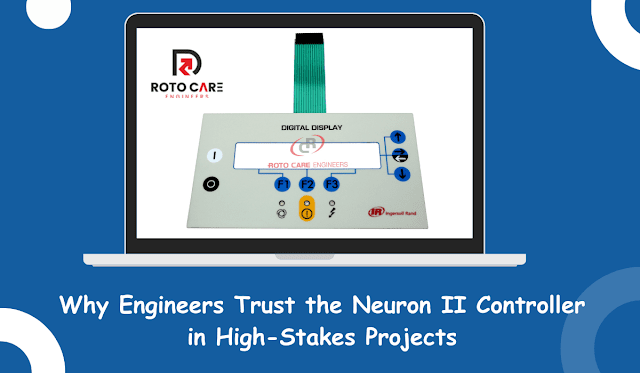Why Engineers Trust the Neuron Li Controller in High-Stakes Projects
In the fast-evolving world of automation and industrial systems, engineers are continually seeking smarter, more efficient control units that offer precision, durability, and scalability. A standout in this space is the Neuron Controller Manufacturer from Ahmedabad, known for delivering robust systems built for mission-critical applications. From manufacturing plants to high-end HVAC setups, this cutting-edge solution has become a preferred choice among engineers aiming for reliability and efficiency under pressure.
Engineering Confidence Backed by Performance
The demand for reliable, field-tested automation tools has never been higher. In high-stakes environments like chemical processing units, advanced refrigeration systems, and power stations, even a small failure can result in severe downtime or safety hazards.
Over time, engineers have tested its capabilities across diverse industries, and its track record speaks volumes. With built-in diagnostics, seamless sensor integration, and compatibility with various industrial protocols, the system allows engineering teams to deploy it with confidence in time-sensitive scenarios. The Neuron Ii Controller particularly stands out for its performance in environments demanding real-time feedback and adaptive responses.
Smart Adaptability in Industrial Ecosystems
With a flexible architecture, it can easily interface with variable frequency drives, PLCs, sensors, and remote monitoring tools. Engineers are especially impressed by its plug-and-play capabilities, making it suitable for rapid deployment and minimizing project delays. Additionally, the design supports cloud connectivity, allowing remote monitoring and predictive maintenance—two features that are now essential in Industry 4.0 deployments.
Its ability to handle real-time data processing and automated responses makes it an integral component in smart manufacturing setups. Even when dealing with dynamic loads and varying external conditions, it maintains system stability—precisely why more industrial professionals are leaning toward this innovation.
The Edge in Safety and Efficiency
Another key reason for its popularity lies in its dual emphasis on safety and energy efficiency. The integrated alarm system and fault diagnostics protect assets and personnel, while its energy optimization algorithms help reduce power consumption during peak operations. That combination offers tangible benefits: longer equipment lifespan, lower operational costs, and fewer unplanned shutdowns.
The unit's efficiency is also amplified by its ability to precisely control airflow and temperature across complex HVAC setups. In fact, many professionals specializing in climate control systems refer to it as the most efficient Compressor Controller in its segment. With pressure-based optimization and intelligent sequencing of multiple compressors, energy savings are realized without compromising on performance.
Designed with Engineers in Mind
Unlike many automation systems that require steep learning curves or external programming, this one is designed for ease of use. Engineers can configure, monitor, and troubleshoot the system via a streamlined interface. Its logical layout and responsive firmware make setup quicker and reduce the chance of operational errors.
Feedback from the field also highlights its resilience in tough conditions. Dust, humidity, and electrical noise often wreak havoc on sensitive electronics, but this unit is known for maintaining integrity under all these challenges. Its rugged housing, combined with efficient heat management, ensures uninterrupted performance even in demanding industrial settings.
Proven Track Record in Critical Deployments
Engineers don’t make decisions lightly—especially when system failures can cost millions. The unit’s widespread use in sensitive industries like pharmaceuticals, data centers, and food processing is a testament to its credibility. Each application adds a new layer of trust, validating its role as a dependable solution for automation control.
Its development is deeply rooted in collaboration between field experts and advanced design engineers. This means every feature, from voltage tolerance to communication interface, is fine-tuned for real-world requirements. As a result, it doesn't just meet industry standards—it often sets them.
Final Thoughts
In high-stakes projects where precision, adaptability, and reliability are non-negotiable, engineers need solutions that deliver consistently. Whether managing temperature-sensitive processes, optimizing multi-stage systems, or ensuring energy-efficient operations, this innovation continues to earn the trust of technical teams worldwide.
As industrial operations evolve toward more integrated and efficient frameworks, the value of intuitive, high-performance controllers will only grow. By bridging traditional systems with modern automation requirements, this trusted solution remains a cornerstone in the future of smart engineering.
.png)
Comments